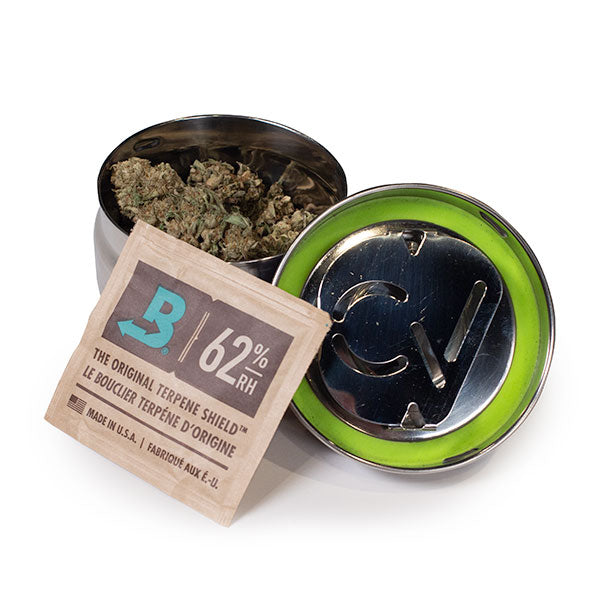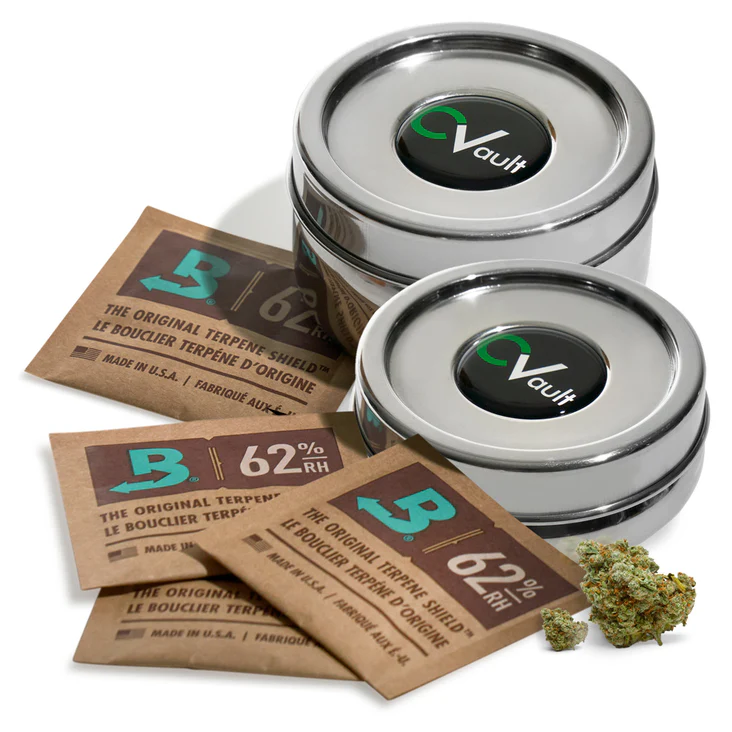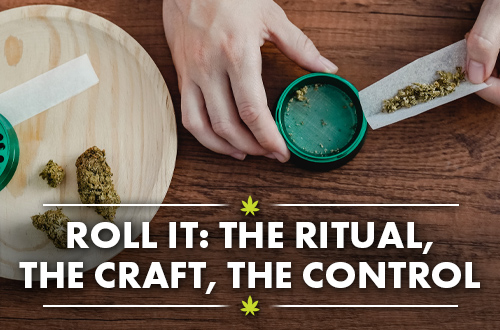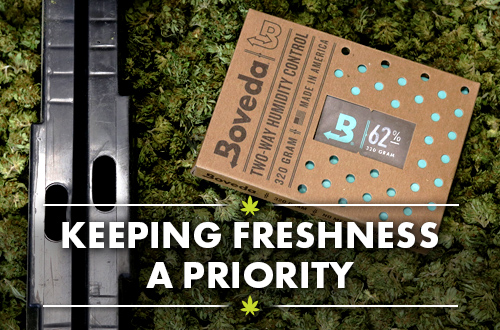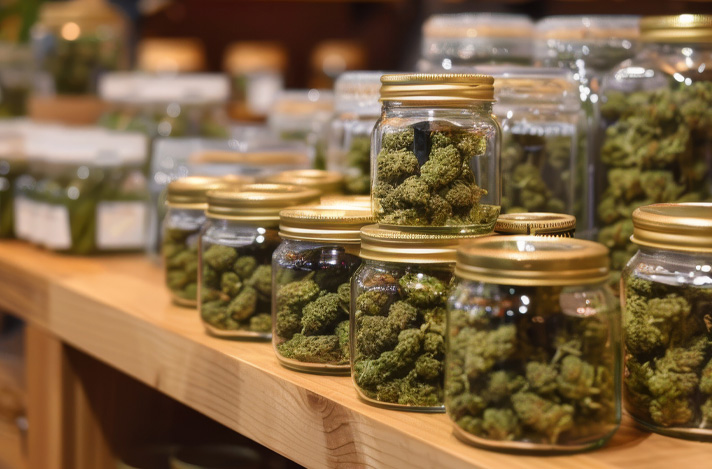
The cannabis world has evolved at a breakneck pace in the last decade, thanks to slates of legalization across the country. Because of that evolution, there are more types of cannabis at your local dispensary than ever before. It used to be that you got two, maybe three options for cannabis—each of unknown origin and strength. Now, you can peruse through rows upon rows of highly detailed packages to land on the right weed for your purposes.
To the avid, educated weed enthusiast, this is remarkably good news. However, to the novice smoker just dipping their toes in the water, it can be overwhelming. If you count yourself in the second category, this article is here to help. Below, navigate the different types of weed, find a straightforward buyer’s guide to choosing the right product, and learn a little bit about shielding your stash with Boveda’s 2-way humidity packs.
Understanding Cannabis Types: Beyond Indica and Sativa
Not so long ago, the line in the sand was pretty firmly drawn: You were either an indica person or a sativa person. Now, as scientists explore the legalized substance in better detail, that dichotomy is incomplete at best—and misleading at worst. In this section, let’s break down the traditional classifications of different types of cannabis alongside some more modern perspectives on how to classify weed.
Traditional Cannabis Classifications
- Indica: These short, broad, bushy plants trace their heritage to Central and South Asia, including the famed Hindu Kush mountains. The old line of thinking was that indica is “couch lock” cannabis, a calming, “body high” counterpart to sativa.
- Sativa: Sativa plants are tall and thin, preferring dry, sunny climates for their longer grow time. They were traditionally thought of as the “mind-high” cannabis plant, with energizing, creative, and mentally stimulating characteristics.
- Hybrid: Then, there are hybrid plants, cultivated by crossing the two “strains” above. While labels might still say “Indica” or “Sativa,” the vast majority of cannabis currently on the market is hybrid.
Great, so that’s an easy way to classify and categorize cannabis… well, not so fast. According to Amos Alberg, the head of data science at Confident Cannabis, “We see no identifiable characteristics that are consistent with indica, sativa, or hybrid… Essentially people are using these terms as catchalls for effect, but they’re not all consistent with those effects. Some indica makes some people wired, not couch-locked, for instance.”
Modern Classification Factors
Instead, some industry experts are pushing for modern perspectives on cannabis classification. These classifications are based on:
- Genetic Overlap: The genetic similarities between strains.
- Chemotype vs. Genotype: The chemical composition of the cannabis, rather than its physical traits.
- Terpene Influence: The role of cannabis terpenes in determining strain effects, which is an exciting and pretty new field of intense study among scientists.
- The Reality of Most Growing Operations: Most modern strains that growers produce are hybrids, and blend various characteristics to make a unique product. Therefore, many cannabis experts believe that it should be the responsibility of growers/brands to include a product description of chemovars (chemical varieties) and (to the extent that it’s possible) the likely effects of the product.
Where does that leave the novice consumer? In the next section, let’s explore some realistic ways to determine what weed is right for you.
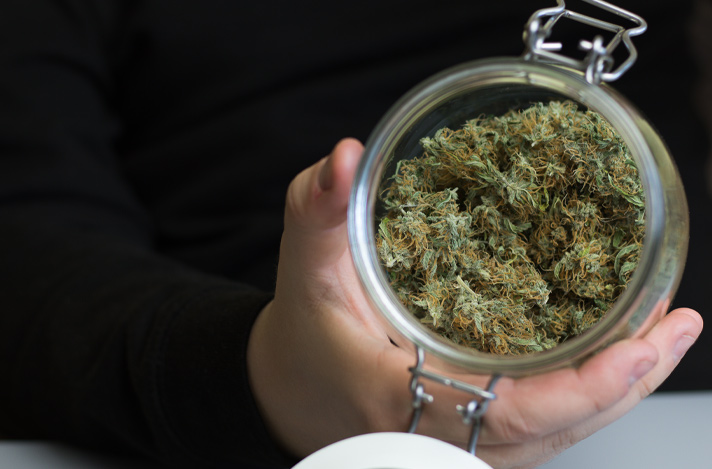
Factors to Consider When Choosing a Strain
You’re at the dispensary, eyeing the fully stocked display cases with strange names like Grandaddy Purple, Sour Diesel, Girl Scout Cookies, and Blue Dream. How do you choose? Here are a few steps you can take to land on the right product.
Be Honest with Yourself About Desired Effects
It all starts with you. What do you want from your cannabis? Are you looking to relax into the couch with a Netflix show? Or do you want the energy to clean your entire house? Are you after pain relief, or would you favor a fresh boost in creativity?
Asking yourself these simple questions is the first step toward getting the right cannabis strain for you. And if your local budtender is particularly good at their job—i.e., matchmaking products to your needs—it might even be your last step. Talk to the dispensary sales reps about what you want, and see if they can recommend an appropriate product.
Consider Your Personal Tolerance and Experience Level
If you’re just starting out on your cannabis journey, take it slow. Look for products with lower THC levels to find your footing and gauge your tolerance level. The same goes for users with a history of anxiety relating to THC usage.
At the risk of sounding repetitive, talk to your budtender. Tell them your about past cannabis experience/tolerance level and ask for recommendations.
Check the THC vs. CBD Content
Some experts insist that an “entourage effect“ of various cannabidiols, terpenes, and flavonoids impacts the effect of a given cannabis product. That might be true. But, every single cannabis scientist can agree that the most influential component in terms of effect is THC—trailed by its chill-out sibling, CBD.
Therefore, a great way to get some sense of what a weed product will feel like is to read the package for THC/CBD content. These figures are expressed as percentages (or mg/g in some places), with higher THC figures indicating more potency. Flower comes in strengths ranging from 0% to 30%. Newbies should consider purchasing a product below 15%. As the Philadelphia Inquirer points out, cannabis products of 15% THC or more “will have powerful mind-altering effects and will get a consumer higher.”

Ask About the Terpene Profile
Getting the right types of weed isn’t just about THC and CBD effects. It’s about the overall experience. Whether or not you trust in the entourage effect, terpenes play a critical role in cannabis enjoyment, giving your bud a wide array of flavors and aromas. Consider what flavors you like most: the lemony tang of limonene, the woodsy aroma of pinene, the sweet and spicy tingle of myrcene, etc. Shop for weed types that highlight your favorite terpenes to get a product that suits your taste. When you bring the cannabis home, store it with Boveda’s weed packs to lock in those terpenes and keep your flower fresh.
Experiment, Research, Repeat
Finally, the best way to find the right weed for you is through good old-fashioned trial and error. (Hopefully, there won’t be too much error). Follow the steps above to find a product that matches your tolerance and terpene preferences on paper. Try the new strain. Keep it safe with an airtight container and weed humidity control pack. Try out the same strain again for good measure. Notice what you like or don’t like about the product, and adjust your criteria accordingly next time you shop.
In the meantime, become an educated cannabis consumer:
- Involve yourself in internet communities like Reddit’s r/trees to swap recommendations with people who have similar tastes and distastes.
- Read Boveda’s resources on how to tell good weed vs. bad weed and the importance of sticky weed.
Over time, you’ll become a more informed, empowered cannabis consumer. And with that empowerment, you’ll be able to zero in on the products that you like best.
Love Your Weed? Protect it with Boveda

Each pack keeps up to 1 oz of flower fresh & flavorful
Shop Now




